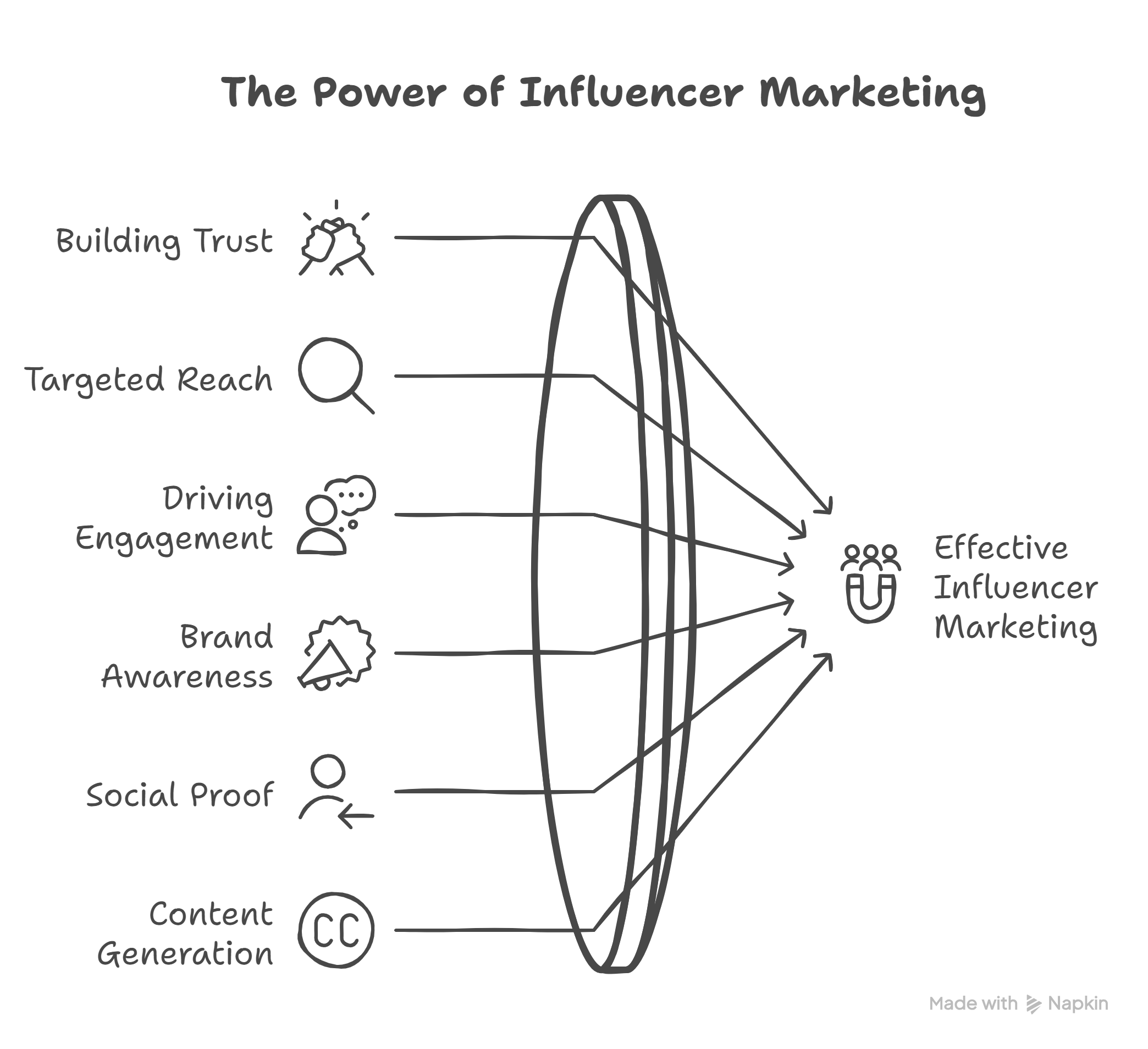The Role and Importance of Influencers Today
Influencers have become a significant force in modern marketing. They are individuals (or sometimes groups) who have built a dedicated following and credibility within a specific niche online. Brands collaborate with them to leverage their connection with their audience. Here's why they are important:
1. Building Trust & Authenticity
- Concept: Influencers often have a strong, trusting relationship with their followers. When they recommend a product or service, it can feel more like a genuine suggestion from a friend than a traditional advertisement.
- Why it Matters: This perceived authenticity cuts through the noise of typical advertising, which can sometimes be seen as interruptive or less personal.
- Example: Imagine your favorite book reviewer on YouTube passionately recommends a new novel they genuinely loved. You're likely more inclined to check it out based on their trusted opinion than if you saw a generic banner ad for the same book.
2. Targeted Reach
- Concept: Influencers usually cater to specific interest groups (e.g., vegan cooking, budget travel, specific video games).
- Why it Matters: Brands can partner with influencers whose audience perfectly matches their target demographic, making marketing efforts highly efficient and aligning with principles of market segmentation.
- Example: A company selling specialized hiking gear can collaborate with an influencer known for documenting challenging mountain treks. They reach an audience already passionate about hiking, ensuring the message resonates.
3. Driving Engagement
- Concept: Content posted by influencers often receives significantly more likes, comments, shares, and discussion than posts from the brand itself.
- Why it Matters: High engagement signals audience interest and helps spread the message organically, crucial for building customer relationships, especially in the 'engage' phase of the customer journey.
- Example: A popular makeup artist posts a tutorial using a new eyeshadow palette. The comments section fills up with followers asking questions, sharing their own looks using the product, and tagging friends – far more interaction than a standard brand post might achieve.
4. Boosting Brand Awareness & Credibility
- Concept: Partnering with a respected influencer introduces the brand to a new audience and borrows some of the influencer's credibility.
- Why it Matters: It increases visibility and can improve how potential customers perceive the brand, contributing positively to the brand's overall reputation and recognition online.
- Example: A small, independent coffee roaster sends samples to a well-regarded coffee connoisseur influencer. A positive review instantly puts the small brand on the map for thousands of coffee lovers and lends it credibility.
5. Social Proof
- Concept: An influencer's recommendation acts as a powerful form of validation or "social proof."
- Why it Matters: Seeing someone they admire using or endorsing a product can heavily influence a follower's decision to purchase, tapping into psychological factors influencing consumer behavior.
- Example: You're unsure about buying a new productivity app, but then you see several entrepreneurs you follow on LinkedIn praising how much it has helped their workflow. This social proof makes you feel more confident in trying it out.
6. Content Generation
- Concept: Influencers create original content (photos, videos, blog posts) featuring the brand's product or service.
- Why it Matters: This provides brands with a stream of diverse, often more relatable and user-centric content that they can potentially reuse (with permission) across their own marketing channels.
- Example: A travel company sponsors an influencer's trip. The influencer produces high-quality vlogs, stunning photos, and blog posts about their experience. The travel company gets exposure and authentic-looking content showcasing their travel packages.
7. Navigating the Modern Landscape
- Concept: Influencer marketing thrives in the current digital environment dominated by social media, mobile usage, data analytics, and cloud technologies (often referred to as the SMAAC ecosystem).
- Why it Matters: Influencers primarily operate and engage their audiences on social and mobile platforms, making them native to this modern technological landscape.
- Example: A fashion influencer showcases an outfit on Instagram Stories (Social, Mobile), uses polls to ask followers' opinions (driving engagement data for Analytics), and links directly to the brand's e-commerce site (often cloud-hosted). This seamlessly integrates into how people consume content today.


No Comments